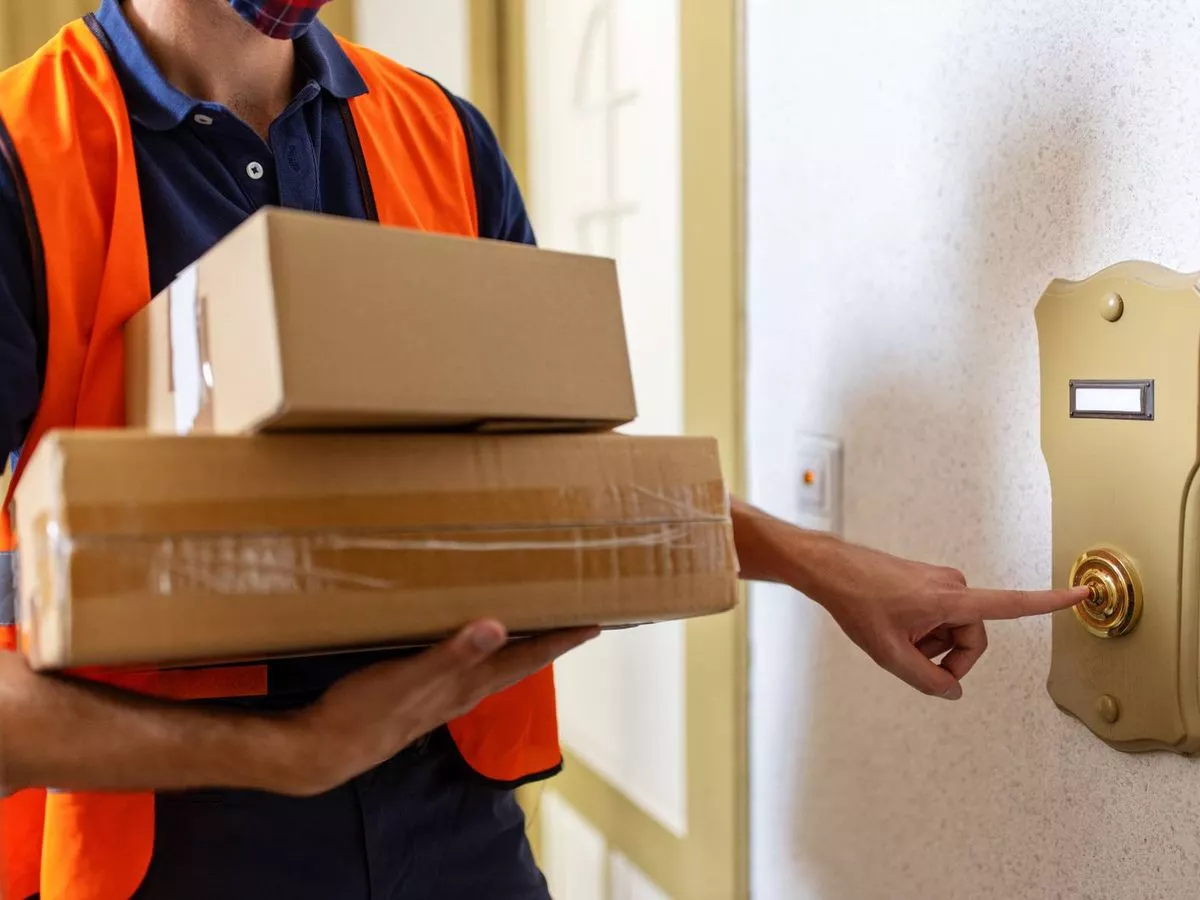Copyright mirror

There are lots of things that drive us mad in the UK. Potholes. Bin collections. Self-service checkout machines. Chatbots. But when I speak to people around the UK, there is one subject that always crops up. Package delivery companies. From parcels left in recycling bins or chucked over fences, to claims of deliveries that never occurred or missing parcels that have vanished en route, never to be seen again: it’s clear you’ve all had enough. As we approach the busiest season for online shopping, it’s a good idea to familiarise yourself with your rights when it comes to package deliveries so you know where you stand. Here’s my guide. So your parcel is missing/damaged/lost. What should you do? Here’s the most important rule. If your parcel is broken, damaged or just plain missing in action, you should take the matter up with the retailer who sold you the goods, not the courier company. When you buy goods, your contract is with the shop, not the manufacturer or delivery firm. The retailer is responsible for getting the goods to you as advertised. They are also responsible for refunding you if there’s a problem, or arranging a replacement. That doesn’t mean the delivery company is allowed to get away with poor service. If they keep damaging or losing things, then that will cost the retailer cash and they will take action when they’ve had enough. Retailers have a few options when it comes to very common situations like lost or damaged packages. They can make a pragmatic decision about whether to send you a replacement or call it quits and refund your account. They can also go through the tracking process with their contractor, so you should not be expected to go trekking about trying to find where the courier left your parcel. It used to be that some online shops would routinely give up on relatively cheap items – anything under the £30 mark. However, as scammers and chancers got wise to this, they are increasingly making you return damaged or broken items, either through their own returns systems or by dropping the items at a local shop or parcel drop-off centre. Even though our shopping rights are enshrined in law – the Consumer Rights Act and the Consumer Contract Regulations – some retailers accidentally or wilfully ‘misunderstand’ the rules. So let’s spell it out for them. You are not responsible if: Of course, if you’ve sent the parcel, then you do have to deal with the delivery firm (more on that later). The majority of disputes over deliveries that I see arise over items left in a ‘safe space’ – the place where you’ve told the firm it’s okay to leave your package. A courier company should ensure that the parcel is placed in your hands unless otherwise specified. However, this rule is still not being widely adhered to. The delivery companies are under pressure to return as little as possible to the warehouse, which means more often than not, items will be left in foyers, outside front doors or in the dreaded wheely bin. If you’ve not authorised this and the parcel goes missing, then that’s not your problem. However, if you’ve previously set a safe space when you last bought something, those instructions are likely to still be saved with the shop. So always check everything before you make the final purchase. You might have forgotten one-off instructions you’ve previously added to an order to leave items in a safe space or with a neighbour that no longer apply. Most people have experienced the frustration of a delivery card shoved through a letterbox or stuck on a wall when they’ve been in all day, waiting for the doorbell to go. Annoying though this is, it’s usually relatively straightforward to book a redelivery through the website. However, in recent years, there has been a rise in complaints about proof of delivery, from clearly fake signatures to photos of random doors. It’s pretty easy to dispute a fake signature – after all, the courier won’t know what yours looks like. Photos are a little more challenging if you’ve said its okay to leave an item outside your door. Remember that most digital pictures are time coded these days, so don’t be afraid to push back and ask for more evidence if the retailer or delivery firm claims the delivery was made. You may occasionally open your door to see the courier running off in to the distance. The people who actually make the deliveries often have deeply unrealistic targets, so spare a thought for them. But regardless of whether you are in or out – a photo of a parcel by your door doesn’t mean you received it. Contacting courier firms is the single most frustrating issue from a customer service perspective. Parcel companies are regulated by Ofcom, who has raised a number of concerns over the behaviour and service provided by the main players. But unlike other Ofcom regulated industries, like broadband, TV streaming and mobile or landline phones, you can’t go to the free Communications Ombudsman if something goes wrong with a delivery company. This is clearly an anomaly that needs sorting out urgently. Ofcom introduced new rules for delivery firms which mean that couriers should be making it easy to contact them. These rules state that if you complain to a parcel company, you should be told: Despite this, it’s still far too difficult to complain to a parcel delivery company – especially if you are the recipient. Another growing area of complaint comes from people buying and selling things on online marketplaces, like eBay . Remember you have fewer rights if you are buying from a private seller (though you do still have some protections). Most of the complaints I see arise from disputes over returns and sending goods. Make sure you check and follow the delivery and returns rules on the website to the letter – photoing the process might seem a bit overly cautious, but it helps too. eBay and PayPal have buyer / seller dispute processes too if there’s a problem. If you’re the seller, then it’s vital that you follow the postage instructions too. I’ve been flooded with calls in recent months from angry sellers who have reported that the buyer has stolen goods, claiming they have not been sent in the parcel. There are a few gaps in some online marketplace T&Cs that can sometimes allow unscrupulous members of the public to try it on. So if you are selling goods, check the buyer/seller dispute policy and make sure you also document the packaging and sending process too. Call me naive, but I don’t think that’s too much to ask or hard to achieve?



